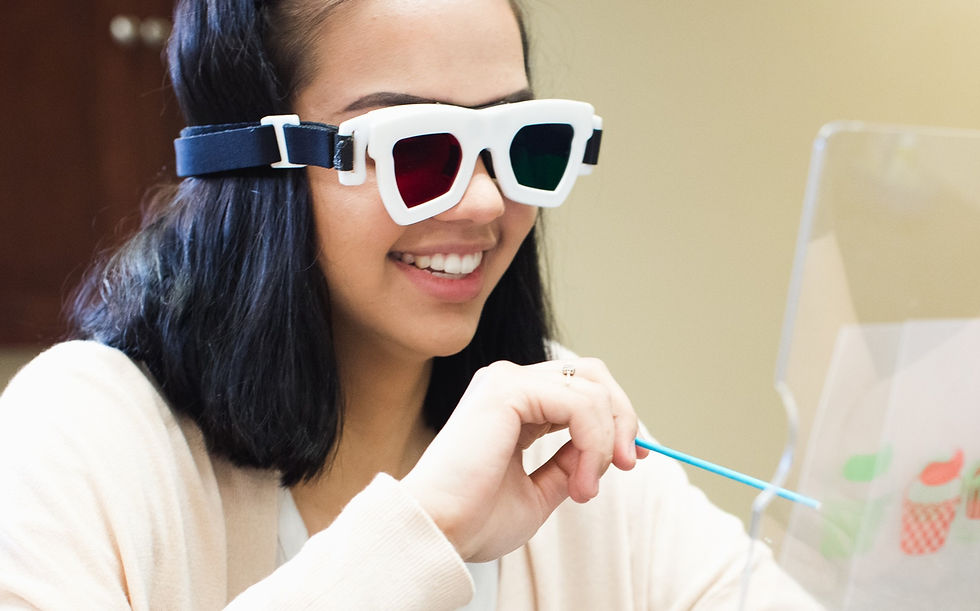Coronavirus - How to Set Up a Remote VT Program
- Benjamin Winters, FOVDR
- Dec 29, 2022
- 3 min read
Updated: Mar 24

By now you’ve likely heard of the CDC’s announcement asking healthcare practitioners to postpone non-urgent visits including routine eye care. This unfortunately includes vision therapy visits, which could be catastrophic for many vision therapy practices. In addition, current vision therapy patients are put in a very difficult predicament.
Many practices in the country are looking to remote vision therapy as a means to continue care to their patients and cash flow to their practices. Fortunately, the President also announced yesterday an easing of regulations associated with telemedicine. This means remote vision therapy can be done with any video conferencing platform and associated HIPAA regulations have been eased. This is all to say that remote vision therapy is easier today than it has ever been.
Here are a few tips on how to set up your remote vision therapy program:
There are many video conferencing platforms that can be used including Facetime and

Skype. In our office, we use Google Meet. With Google Meet you can simply follow these instructions to set up a remote vision therapy session:
Go to your Google Calendar and create an event, in this case it would be your patient’s vision therapy appointment.
Click on “Add Guest” and type in your patient’s email address. This will send an email to them with simple instructions on how to join the video conference at the appointed time.
When it is time for their VT session to start, go to the appointment on the Google calendar and click on “Join Hangouts Meet” and then simply join the video conference.
I recommend turning off your mic by clicking on the microphone icon. Then use the link that says “join using phone for audio” and follow the instructions. This will make sure that the call audio is good during your session even if the internet connection is poor.
Setting up the VT session

In our office, our rule is that anyone younger than 13 years of age must also have a parent join them in the remote VT session. For patients older than 13 we still recommend that they have a friend or parent there to help them during the session if possible. The parent or friend can be your eyes and give you valuable feedback since video conferencing can make it difficult to make certain observations.
With the right equipment and set up there are relatively few vision therapy activities that cannot be modified to work in a remote vision therapy setting. For help with any activity, feel free to contact James Smith, our in-house COVT. james@emergentvt.com
Vision Therapy Equipment

At Emergent we have everything your patient will need to do their vision therapy from home. We customize our take-home kits to tailor to the needs of your clinic so that the patient will have exactly what they need. To help you during this time of transition, we are offering 2 free months of our new and improved product line and 100% free kit customization. All you have to do is schedule a call with

One of the most difficult activities to do is smooth vergences which is a mainstay to most vision therapy programs. For this we recommend our Fusion Slider and Anaglyphs. This can also be done with one of several computer based vergence activities included in programs such as HTS or VisionBuilder.
We hope this will give you a good start in getting your remote vision therapy program up and running. If you have any questions, we (Dr. Ben Winters, OD, FCOVD or James Smith, COVT) are making themselves available for anyone needing help setting up their remote vision therapy program.
Reimbursement
In President Trump’s announcement yesterday he also said, “Medicare patients can now visit any doctor by phone or video conference at no additional cost.” [see update]Given that optometrists have parity in reimbursement with Medicare, there is no reason to think that this would not include optometrists administering vision therapy (however, please be careful, there are a lot of rules that are in place for reimbursement of vision therapy in general for Medicare). As far as other third party reimbursement, you’ll want to check with your individual insurance carriers as to how their telemedicine policies have changed with the coronavirus. Most should have expanded their telemedicine and will likely be aligned with Medicare’s expansion but make sure to check with your contracted insurance companies first.
Update - 3/18/2020 2:45 pm PDT: This is a rapidly evolving situation. I just heard that the AOA in their webinar last night stated that they did not feel vision therapy is included in the President's announcement. So, I would wait for more specific guidelines when it comes to your Medicare and Medicaid patients.





Comments